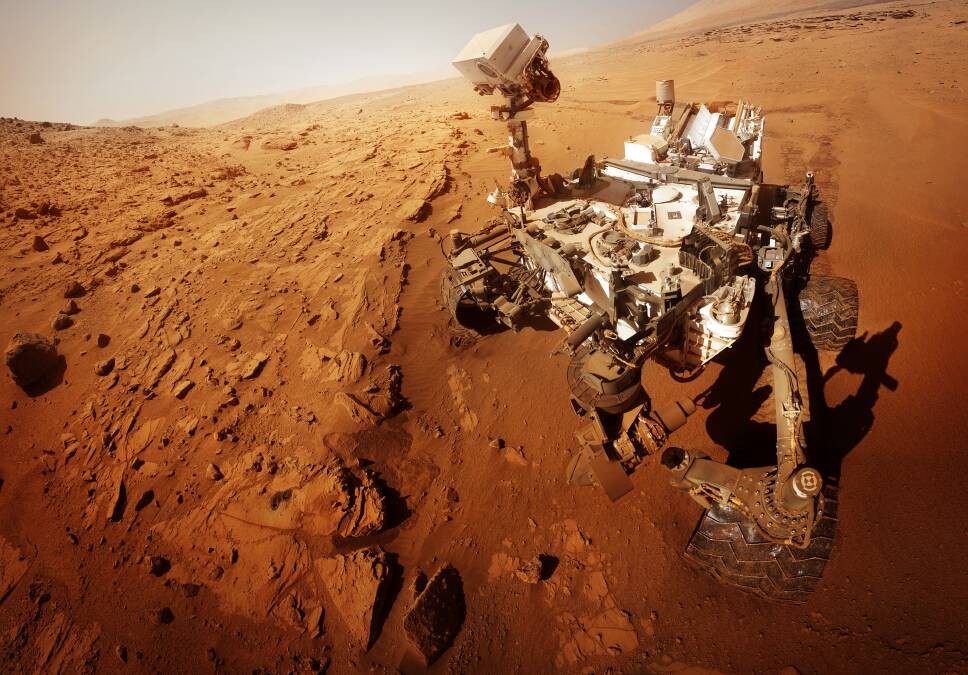It has been more than 10 years since the Curiosity rover landed on Mars as part of NASA's Mars Science Laboratory mission.
The rover was launched from Earth on November 26, 2011. It reached the Gale Crater on August 5, 2012, where it began its main mission of looking for signs of life on Mars. And is still doing so - 10 years later. In August of 2013, for the rover's first anniversary on Mars, engineers at NASA programmed Curiosity to vibrate to the song Happy Birthday.
Hundreds of millions of kilometres away from Earth, it celebrated a very special birthday alone. Since then, Curiosity has spent much more time on Mars still doing research and giving updates through its popular Twitter account.
Happy 10-year landiversary to me!
— Curiosity Rover (@MarsCuriosity) August 5, 2022
It’s been a decade of discoveries. I’ve explored Gale Crater and Mount Sharp, analyzed rock samples, and studied the Martian clouds and sky. In the years ahead, I’ll study a region rich in salty minerals called sulfates. https://t.co/CneNS0c4FY
So far, Curiosity has spent 3551 sols on Mars. Sols are days on Mars, a Mars-day. A sol is very close to a day on Earth, except that it's about 40 minutes longer. And in order to prevent confusion between days on Earth and on Mars, we used a different word.
A little bit about Curiosity

During the early stages of the Curiosity Rover project, NASA held a competition in the US for school students to name the rover.
The winner of the competition was a student named Clara Ma, who chose the name because she was "really curious about space and our planets" and "wanted to learn more about it".
Curiosity does look a little curious, however, it is certainly not little. Curiosity is around the size of a small SUV (about 3 metres long, 2.7 metres wide and 2.2 metres high).
The rover needs to be this large to carry an array of important scientific equipment used to analyse its surroundings and look at rock samples.
What has the rover been doing?
The prime mission of the Curiosity Rover is to search for signs of life on Mars, to which its mission was completed within one Mars year (about 23 months on Earth) with no signs of life found.
Curiosity also showed scientists that it was possible to land a very large and heavy rover on Mars (it weighs about 889 kilograms), that it could land precisely in a certain landing area, and that it was possible to travel a long distance on Mars.
How do we communicate with the rover?
NASA uses the Deep Space Network to communicate with Curiosity.
The network is made up of three giant radio antenna that are spread across the world.
One dish is outside Barstow, California and one is near Madrid, Spain.
There is also one is just outside of our very own capital, Canberra - the Canberra Deep Space Communication Complex in Tidbinbilla.
This global network tracks where the Curiosity Rover. It works to receive and send signals, assisted through a satellite called Odyssey, that are important for both the rover's operation and for relevant data collection here on Earth.
What is going to happen Curiosity?
The rover is powered by a radioisotope (radioactive material), meaning that it has a limited amount of fuel. At some point in time, Curiosity will run out of fuel and die. The curiosity rover is currently being taken over by NASA's Perseverance Rover, and when Curiosity is gone, Perseverance will replace it entirely. We have much to thank Curiosity for and wish it a very happy birthday.
- Amy Briggs is undergraduate student at ANU studying science communication, with special interest in astronomy and astrophysics.







